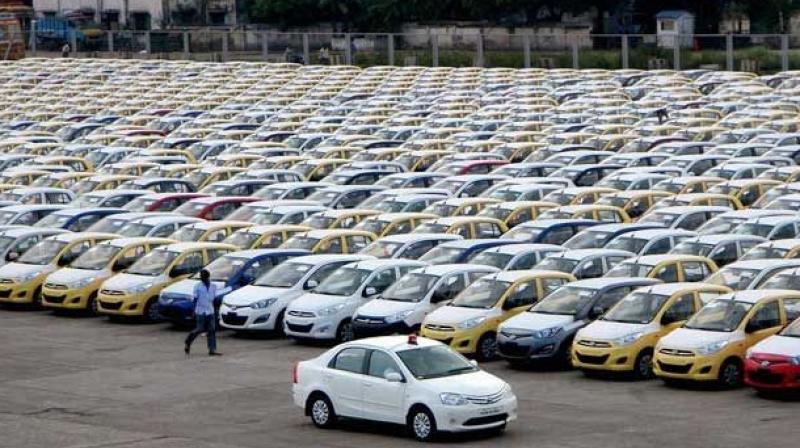New Delhi: Passenger vehicle sales in India rose just 2.7 per cent in 2018-19 as weak customer sentiment led by liquidity crunch, high vehicle prices and uncertainty revolving forthcoming elections put brakes on the sales growth in the segment.
According to data released by the Society of Indian Automobile Manufacturers (SIAM) Monday, domestic passenger vehicles (PV) sales were at 33,77,436 units in 2018-19 beating the previous record of 32,88,581 units in 2017-18.
However, despite new product launches, sales failed to revv up during the second half of the last fiscal which had even prompted the industry body to lower the sales forecast for the PVs from the earlier estimate of 8-10 per cent to 6 per cent. The final figure of 2.7 per cent is even lower than that.
“If we look at the positive side then we have continued to grow, though not in high single-digit or double-digits, but low single-digit. Also, it is the highest-ever sales and production in a financial year,” SIAM President Rajan Wadhera told reporters here.
Domestic car sales in 2018-19 were at 22,18,549 units as against 21,74,024 units in 2017-18, displaying a growth of 2.05 per cent.
Utility vehicles (UV) sales were at 9,41,461 units last fiscal as against 9,22,322 units in 2017-18, a growth of 2.08 per cent.
However, exports of PVs were down 9.64 per cent at 6,76,193 units in 2018-18 as against 7,48,366 units in 2017-18.
“In the year gone by, we faced many challenges. The biggest being high commodity prices during the year which prompted companies to hike vehicle prices which impacted demand. Further issues like compulsory insurance, liquidity crunch at funding companies impacted the sales,” Wadhera said.
With the current fiscal lined up with many challenges, including general elections in the first quarter and transition to BS VI-compliant products later during the fiscal, SIAM said it expected PV sales to grow in the range of 3-5 per cent during the current financial year.
“We expect some pre-buying to happen before the transition to BS VI emission norms. Hope it leads to some growth. We firmly believe in India growth story,” Wadhera said.
When asked if the industry would be able to achieve the target, he added that with the government’s ongoing infrastructure projects and focus on rural areas expected to continue, growth is expected across both urban and rural areas.
During 2018-19, market leader Maruti Suzuki India (MSI) sold 17,29,826 units of PVs at a growth of 5.25 per cent. Rival Hyundai Motor India clocked 5,45,243 units, up 1.68 per cent.
Homegrown auto major Mahindra & Mahindra’s PV sales were at 2,45,351 units posting a growth of 2.21 units, according to SIAM data.
The industry said it expects two-wheeler sales to grow by 5-7 per cent, commercial vehicles by 10-12 per cent and three-wheelers in the range of 7-9 per cent in 2019-20.
In 2018-19, two-wheeler sales rose by 4.86 per cent to 2,11,81,390 units as compared with 2,02,00,117 units in 2017-18. Commercial vehicle sales, on the other hand, rose by 17.55 per cent to cross one million sales in a financial year at 10,07,319 units as compared with 8,56,916 units.
Sales across categories rose 5.15 per cent to 2,62,67,783 units in 2018-19 from 2,49,81,312 units in 2017-18.
In March, PV sales dropped 2.96 per cent, making it the eighth decline in eight months. The sales stood at 2,91,806 units during the month from 3,00,722 units in the year-ago period.
Car sales declined 6.87 per cent to 1,77,949 units during the month as compared to 1,91,082 in March 2018
Motorcycle sales last month slipped 14.27 per cent to 9,82,385 units from 11,45,879 units a year earlier.
Total two-wheeler sales in March declined 17.31 per cent to 14,40,663 units as compared to 17,42,307 units in the year-ago month.
Sales of commercial vehicles were up marginally to 1,09,030 units in March, SIAM said.
Vehicle sales across categories registered a decline of 14.21 per cent to 19,08,126 units from 22,24,224 units in March 2018, it added.
—pti
